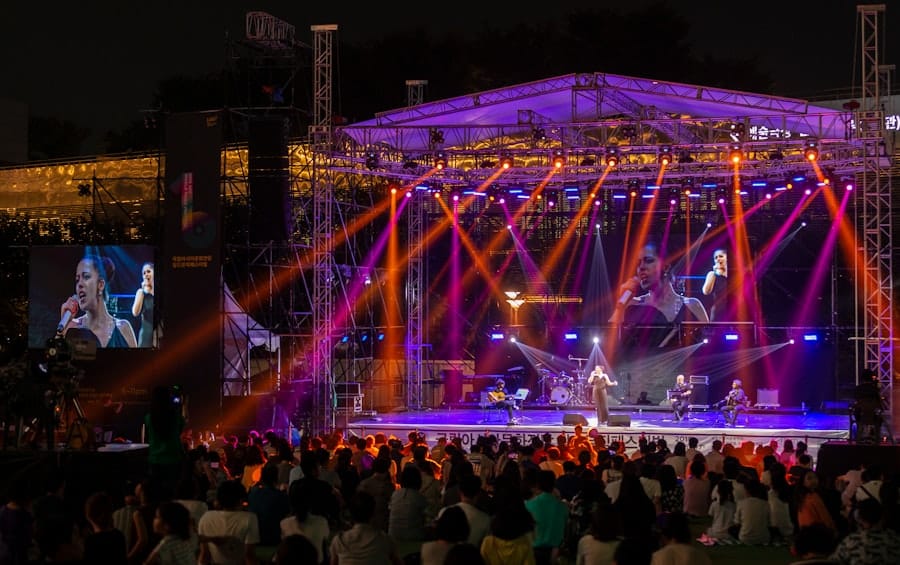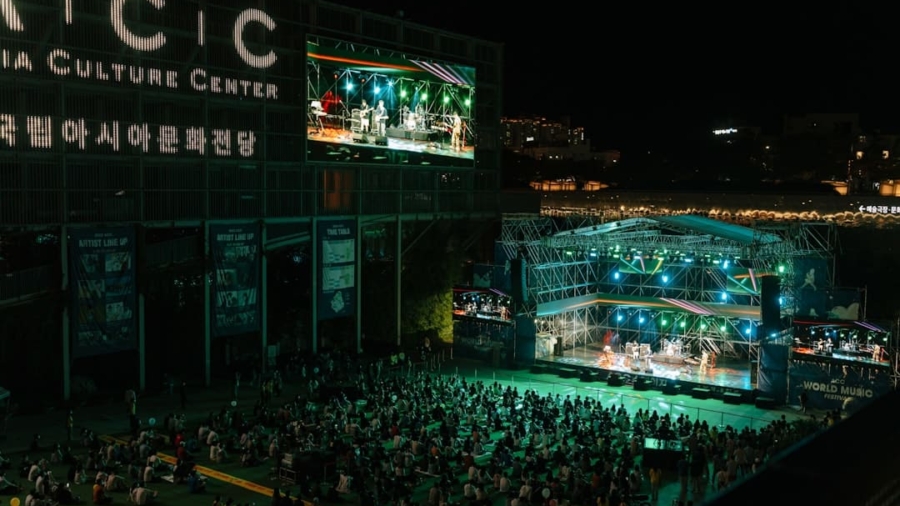The advent of technology has transformed the landscape of live music, giving rise to a phenomenon known as virtual concerts. These events leverage digital platforms to create immersive experiences that transcend geographical boundaries, allowing artists to perform for audiences worldwide without the constraints of physical venues. Virtual concerts have gained significant traction, particularly in the wake of the COVID-19 pandemic, which forced many live events to be canceled or postponed.
As a result, musicians and fans alike have turned to online platforms as a means of connection, leading to a surge in innovative concert formats that blend music with cutting-edge technology. Virtual concerts are not merely a substitute for traditional live performances; they represent a new frontier in the music industry. By utilizing augmented reality (AR), virtual reality (VR), and interactive streaming technologies, artists can create unique experiences that engage fans in ways that were previously unimaginable.
This evolution has opened up new avenues for creativity, enabling musicians to experiment with visual storytelling and audience interaction. As the world becomes increasingly digital, the significance of virtual concerts continues to grow, reshaping how artists connect with their fans and how audiences experience live music.
Key Takeaways
- Virtual concerts have become increasingly popular as a result of the COVID-19 pandemic, allowing artists to connect with fans in a new way.
- Virtual worlds, such as Fortnite and Roblox, have provided a platform for artists to reach a wider audience and create immersive concert experiences.
- Artists like Travis Scott and Lil Nas X have successfully embraced virtual concerts, showcasing the potential for innovative and interactive performances.
- While virtual concerts present challenges such as technical issues and monetization, they also offer opportunities for global reach and creative fan engagement.
- The future of virtual concerts holds promise for the music industry, with potential for new revenue streams and a lasting impact on the way artists connect with their fans.
The Rise of Virtual Worlds
The concept of virtual worlds has been around for decades, but recent advancements in technology have propelled them into the mainstream. Platforms like Fortnite, Roblox, and VRChat have created expansive digital environments where users can interact, socialize, and participate in various activities, including concerts. These virtual worlds offer a sense of community and belonging that resonates with users, particularly younger generations who are more accustomed to engaging in digital spaces.
The rise of these platforms has provided artists with a unique opportunity to reach audiences in innovative ways. In these virtual environments, concerts can take on a life of their own. For instance, in 2020, Travis Scott held a groundbreaking concert within Fortnite that attracted over 12 million concurrent viewers.
The event featured stunning visuals, interactive elements, and a fully immersive experience that captivated fans. This success demonstrated the potential of virtual worlds as a viable platform for live performances, encouraging other artists to explore similar avenues. As technology continues to evolve, the possibilities for virtual concerts within these digital realms are virtually limitless, paving the way for more elaborate and engaging performances.
Case Study: Artists Embracing Virtual Concerts

Numerous artists have embraced the concept of virtual concerts, each bringing their unique flair to the digital stage. One notable example is Billie Eilish, who hosted a virtual concert titled “Where Do We Go? The Livestream” in October 2020. This event was meticulously crafted to provide an intimate experience for fans while showcasing Eilish’s artistry. The concert featured stunning visuals, intricate set designs, and a carefully curated setlist that resonated with her audience. By incorporating interactive elements such as live chat and fan participation, Eilish created a sense of connection that transcended the limitations of traditional live performances. Another prominent case is that of The Weeknd, who utilized virtual platforms to promote his album “After Hours.” His performance at the 2021 Super Bowl halftime show was not only a showcase of his musical talent but also an example of how artists can leverage virtual experiences to reach wider audiences. The Weeknd’s innovative use of visual storytelling and thematic elements throughout his performance captivated viewers and highlighted the potential for virtual concerts to create memorable experiences that linger long after the event has ended. These examples illustrate how artists are not just adapting to virtual concerts but are actively redefining what it means to perform in a digital age.
Challenges and Opportunities of Virtual Concerts
While virtual concerts present exciting opportunities for artists and fans alike, they also come with their own set of challenges. One significant hurdle is the technical aspect of producing high-quality live streams.
Issues such as lagging video feeds or poor audio quality can detract from the overall experience and lead to frustration among viewers. Additionally, artists must navigate the complexities of copyright laws and licensing agreements when performing songs online, which can complicate the planning process. Despite these challenges, the opportunities presented by virtual concerts are substantial.
For one, they allow artists to reach global audiences without the limitations of physical venues. This democratization of access means that fans from diverse backgrounds can experience live music in ways that were previously unattainable. Furthermore, virtual concerts can be more cost-effective for both artists and fans.
With no need for travel or venue expenses, artists can allocate resources toward enhancing their performances and creating more engaging content. This shift not only benefits musicians but also fosters a more inclusive environment for fans who may not have been able to attend live shows due to financial or logistical constraints.
Engaging Fans in Virtual Worlds
Engagement is a critical component of any successful concert experience, and virtual concerts offer unique ways to foster interaction between artists and fans. One effective method is through real-time chat features that allow viewers to communicate during performances. This instant feedback loop creates a sense of community among fans who can share their thoughts and reactions as the concert unfolds.
Additionally, many platforms incorporate interactive elements such as polls or Q&A sessions, enabling fans to feel more involved in the experience. Moreover, artists can leverage social media to enhance fan engagement before, during, and after virtual concerts. By promoting events through platforms like Instagram or Twitter, musicians can build anticipation and excitement among their followers.
During the concert itself, artists can encourage fans to share their experiences online using specific hashtags or by tagging the artist’s account. This not only amplifies the reach of the event but also creates a digital scrapbook of memories that fans can revisit long after the concert has ended. By prioritizing fan engagement in virtual worlds, artists can cultivate deeper connections with their audience and foster loyalty that extends beyond individual performances.
Monetizing Virtual Concerts

As virtual concerts continue to gain popularity, monetization strategies are evolving alongside them. Traditional revenue streams such as ticket sales are being supplemented by innovative approaches that capitalize on the unique aspects of digital performances. One common method is through ticketed live streams, where fans pay for access to exclusive content or behind-the-scenes experiences.
This model allows artists to generate revenue while providing fans with added value beyond what they would receive from a free stream.
Artists can create limited-edition items specifically for their online performances, tapping into fans’ desire for exclusive memorabilia.
Furthermore, platforms often offer integrated shopping features that allow viewers to purchase merchandise directly during the concert experience. This seamless integration not only enhances the fan experience but also provides artists with additional revenue streams that were less accessible during traditional live performances.
The Future of Virtual Concerts
The future of virtual concerts is poised for continued growth and innovation as technology advances and audience expectations evolve. One potential direction is the integration of augmented reality (AR) into live performances. Imagine attending a concert where holographic visuals enhance the artist’s performance or where fans can interact with digital elements in real-time through their smartphones or AR glasses.
This level of interactivity could redefine how audiences experience live music and create unforgettable moments that blend reality with fantasy. Moreover, as 5G technology becomes more widespread, the potential for high-quality streaming will increase significantly. This advancement will enable artists to deliver even more immersive experiences without the technical limitations currently faced by many performers.
Additionally, as virtual reality technology becomes more accessible, we may see an increase in fully immersive concerts where fans can attend from their homes while feeling as though they are part of a live audience. The possibilities are vast, and as artists continue to experiment with new formats and technologies, virtual concerts will likely become an integral part of the music industry landscape.
The Impact of Virtual Concerts on the Music Industry
Virtual concerts have undeniably made a significant impact on the music industry by reshaping how artists connect with their audiences and how fans experience live music. They have opened up new avenues for creativity and engagement while providing opportunities for monetization that were previously unexplored. As technology continues to advance and audiences become more accustomed to digital experiences, it is clear that virtual concerts will play an increasingly vital role in the future of music.
The evolution of virtual concerts reflects broader trends within society as we navigate an increasingly digital world. Artists who embrace this shift will not only enhance their reach but also cultivate deeper connections with their fans in ways that transcend traditional boundaries. As we look ahead, it is essential for musicians and industry professionals alike to remain adaptable and open-minded about the possibilities that lie within this new frontier of live performance.
In exploring the innovative ways artists are launching concerts in virtual worlds, it’s interesting to consider how technology enhances user experiences across various platforms. A related article that delves into the impact of advanced technology on everyday devices is the iPhone 14 Pro: Experience the Power of Pro, which highlights the capabilities of modern smartphones in creating immersive experiences, much like those found in virtual concert settings.
FAQs
What are virtual worlds?
Virtual worlds are computer-based simulated environments where users can interact with each other and create and manipulate objects. These worlds often have their own economies, social structures, and rules.
What are some popular virtual worlds for hosting concerts?
Some popular virtual worlds for hosting concerts include Second Life, Sansar, and VRChat. These platforms offer users the ability to create and customize their own virtual spaces and interact with others in real time.
How do artists launch concerts in virtual worlds?
Artists can launch concerts in virtual worlds by creating a virtual space, promoting the event to their fans, and performing live or streaming pre-recorded performances. They can also collaborate with virtual world event organizers to reach a wider audience.
What are the benefits of launching concerts in virtual worlds?
Launching concerts in virtual worlds allows artists to reach a global audience without the need for physical travel. It also provides a unique and immersive experience for fans, and can be a source of revenue through ticket sales and virtual merchandise.
What are some challenges of launching concerts in virtual worlds?
Some challenges of launching concerts in virtual worlds include technical issues, such as internet connectivity and platform compatibility, as well as the need to create engaging and interactive experiences for fans in a virtual environment.

